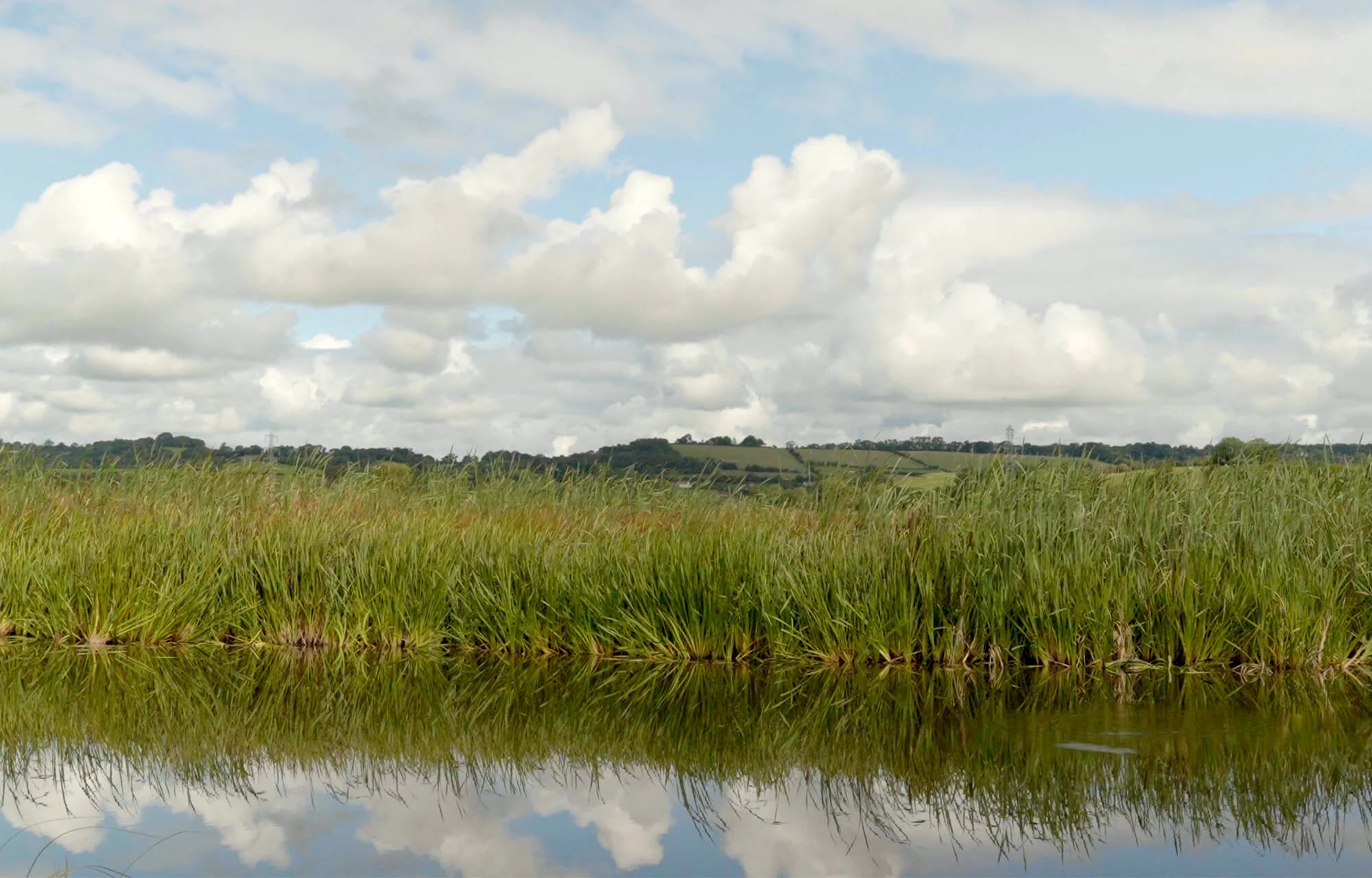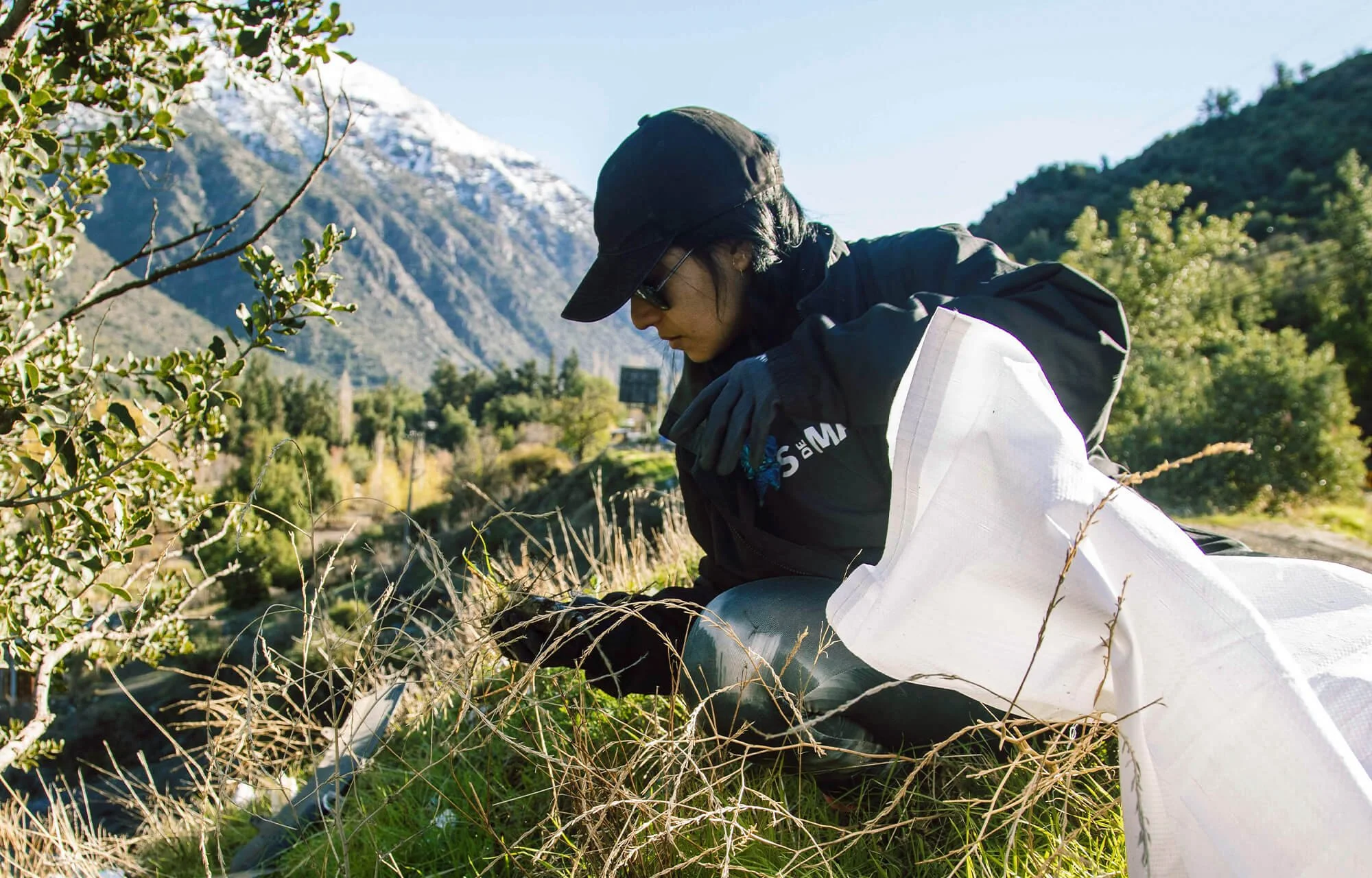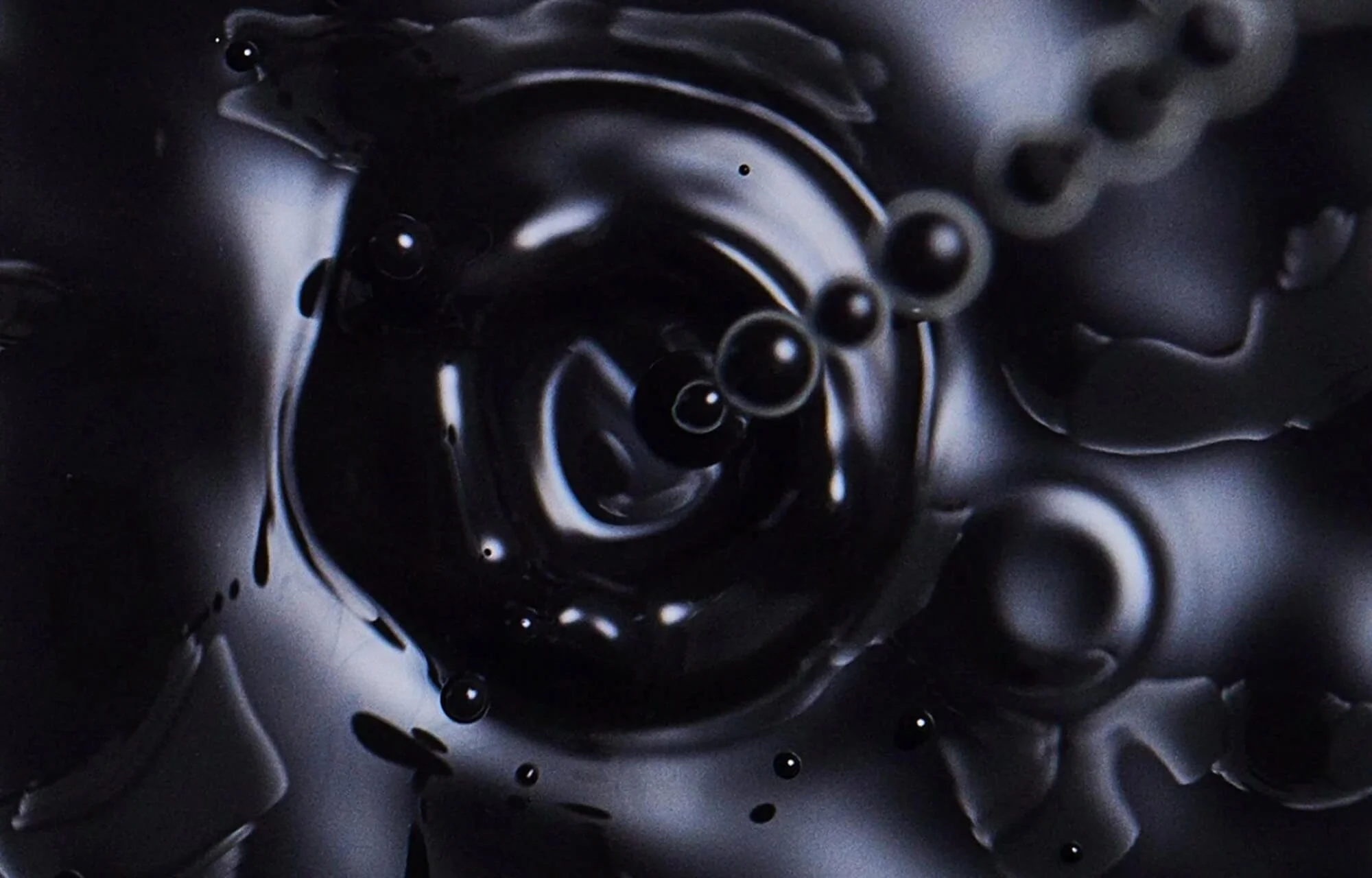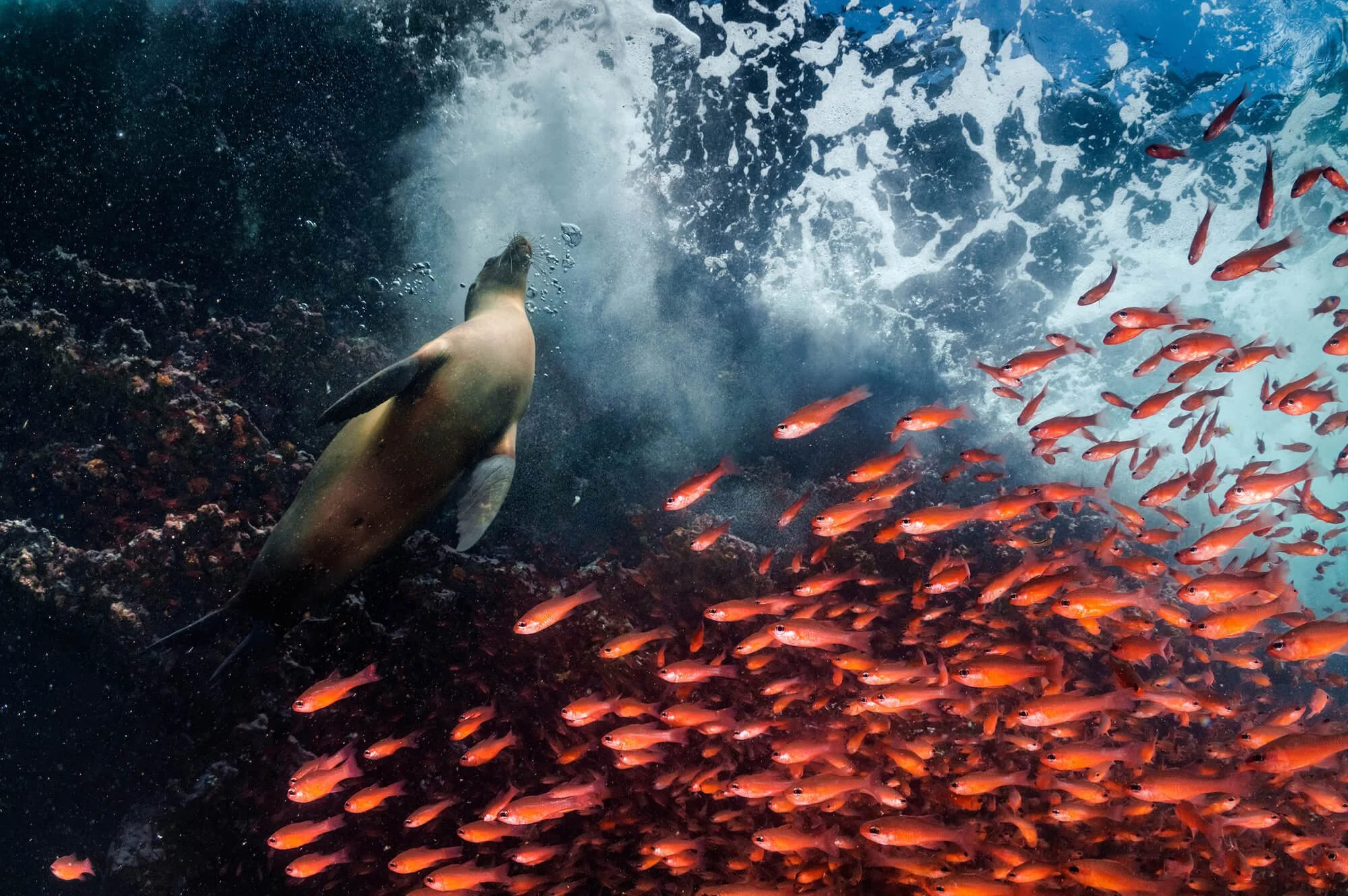The Beautiful Microbiology Instagram Account Giving a Wider View of OUr World
We speak to Dr. Igor Adameyko about The Story Of A Biologist, his archive of ethereal marine microorganisms
Dr. Igor Adameyko’s day job puts our origin story under the microscope. The Adameyko Lab, based in Vienna and led by Adameyko himself, is a research group that investigates the humble starting points of life – from a single, fertilized cell through to a walking, talking, bipedal human being, or a blue whale. These opening moments of existence might be miniscule in size, but carry with them some of biology’s largest, most profound questions. “What drives a single cell to generate neurons, muscles, skin, or blood,” is a major evolutionary query that underpins the work being done by him and his team in Austria, he tells me. Essentially, they are attempting to unravel the mysteries of cell behaviour – why they do what they do, with a primary focus on developmental biology, which is the study of organisms’ growth process.
Outside of this deep exploration of life’s beginnings, Adameyko and his team like to…do more of the same. “We love to run hobby projects in different areas of biology – just to keep our brains sharp and entertained,” he says. “For example, by studying corals and other marine species, the lab explores how fundamental developmental mechanisms have evolved across different branches of the tree of life, shedding light on the origins of complex multicellular structures and the nature of colonial organization of life. The Adameyko Lab is also interested in the evolutionary aspects of cell types and organ systems. For this reason, we pay attention to biodiversity of the ocean – a cradle of life that is both ancient and most diverse.”
His Instagram page, “The Story Of A Biologist”, caught our attention a little while back, a beautiful archive of tiny marine life, shown to the world via microscope in incredible detail. On the account you’ll find zooplankton and nudibranchs from the North Sea, shrimp larva just a millimetre in length, and jellyfish pulsing their way through the dark ocean. We caught up with Dr. Adameyko, to find out more about his hobby account, his artistic fascination with miniscule sea creatures, and what we can learn about the wider world by zooming in so close.
Ctenophiece
Amphipod
Starfish larva
Magelnoid polychaete
Crab larva (Megalopa)
Fish egg
Q&A
Your Instagram account "The Story Of A Biologist" is something you refer to as a hobby that can help inform the work that you're doing in the lab. Could you say how it relates to it?
The "The Story Of A Biologist" Instagram channel (as well as YouTube, TikTok, Threads, and other channels) is a pure hobby initiative of mine with the idea to explore and share marine biodiversity in a very broad sense. Sometimes, the connections that started within the Instagram community of biologists helped us to address some questions in the lab, and I hope also inspired or helped the other researchers in a number of practical ways. Still, I would rather think that my Instagram and other channels connect to our main research only marginally or indirectly. In a way, I feel a bit like Dr Jekyll and Mr Hyde – in the lab, I am fully immersed in developmental and evolutionary biology, dissecting complex mechanisms that govern how cells build and shape organisms. But outside of the lab, through my social media channels, I embrace the role of an explorer, diving into the vast and largely uncharted world of marine biodiversity. These two sides of my scientific curiosity – the structured, hypothesis-driven approach in the lab and the open-ended, artistic fascination with marine life – coexist in a way that sometimes surprises even me.
The contrast between these two personas is striking. In the lab, we meticulously analyze data, refine models, and test hypotheses with rigorous methods. But in the realm of marine exploration, there is a certain element of unpredictability and discovery - whether it's encountering a delicate, translucent larva that looks nothing like its adult form or capturing rare footage of a bigger organism in its natural environment. This duality of structured research and spontaneous exploration keeps my curiosity alive and often leads to unexpected intellectual connections.
Even though my social media activities and the lab’s primary research do not directly overlap, I believe they contribute to the same broader mission: understanding life’s complexity and sharing its wonders with others. Sometimes, documenting marine biodiversity sparks new ideas about the evolutionary origins of certain developmental mechanisms we study in the lab. Other times, conversations with fellow biologists online lead to collaborations or new ways of thinking about scientific problems. And, perhaps most importantly, sharing these discoveries with a wider audience helps bridge the gap between research and public understanding, making the hidden world of marine life more accessible and inspiring to others.
What makes this microscopic world particularly intriguing is that nearly all large marine life begins as something minuscule. A jellyfish, a starfish, a sea urchin, or a crab all start from a single, almost invisible egg, developing into a larval stage that looks nothing like the adult form. These tiny, 1 mm or smaller, larvae drift for weeks or even months as plankton, navigating ocean currents and undergoing astonishing transformations before eventually settling and metamorphosing into the familiar creatures we recognize. Some, like sea urchin larvae, develop intricate skeletal structures as they float in the water column, while others, such as jellyfish, go through multiple body forms before reaching maturity.
Documenting this tiny hidden world is important because it reveals the complexity of marine life cycles - something that is often overlooked. The ocean is not just home to the large, charismatic species we admire; it is sustained by an intricate web of developmental stages, delicate transitions, and interdependent relationships. By bringing attention to these overlooked life forms, we can challenge simplistic views of marine biology and foster a greater appreciation for the interconnectedness of ocean ecosystems.
Additionally, understanding these microscopic stages is crucial because the survival of larval forms determines the future of fish populations, coral reefs, and entire marine communities. Many species face threats due to climate change, pollution, and habitat destruction, and their most vulnerable life stages - often the smallest - are the first to be affected. Ultimately, unveiling this microscopic world is not just about scientific curiosity - it is about reshaping the way people perceive the ocean. When we recognize that almost every large, majestic marine animal once existed as a drifting, fragile larva, we develop a new appreciation for the resilience and complexity of life beneath the waves. The last argument, but not the least, is about how scientific research can sometimes feel distant from public engagement, but hobby-driven biodiversity projects help democratize marine science. By making discoveries accessible and fostering curiosity, they bridge the gap between scientific institutions and everyday ocean enthusiasts. Such hobby projects focused on ocean biodiversity may seem like small personal endeavors, but their collective impact can be profound. Whether through photography, videography, or simply sharing observations, these efforts contribute to a deeper appreciation of marine life - helping to ensure that future generations can continue to marvel at the wonders of the sea.
Antizoea of a lobster
“By bringing attention to these overlooked life forms, we can challenge simplistic views of marine biology and foster a greater appreciation for the interconnectedness of ocean ecosystems.”
Dr. Igor Adameyko
On this account there are many different tiny marine creatures captured underneath your microscope. How are you collecting all of these different samples?
I collect samples using a plankton net, as well as simple equipment like bottles that I bring along during diving or snorkeling sessions. The choice of sampling site depends on research goals or simply the available opportunities. Nearshore waters often contain diverse plankton populations influenced by tides and nutrient influx, whereas open ocean or deeper-water sampling can reveal different community compositions. Sampling can be done at the surface, at specific depths, or through the entire water column using vertical or oblique tows. I often sample from different boats, while sailing with my colleagues and friends. I also enjoy tidepooling and exploring shorelines, searching for tiny microscopic creatures that become trapped in shallow pools of water among the rocks and sand.
With the Phacellophora camtschatica for example, are you diving with this jellyfish species?
Yes, I have been diving with these species many times. They are also sometimes cultivated in public aquariums, and I always take the opportunity to film jellyfish collections there as well. There are advantages and disadvantages to both settings. Filming in the open ocean provides the most natural and authentic view of jellyfish in their environment. Their movements, interactions with other marine life, and responses to ocean currents can be observed in real-time, offering valuable insights into their behavior. The natural lighting and dynamic background create breathtaking visuals that cannot be fully replicated in controlled environments. However, open-ocean filming also comes with challenges. Visibility can be unpredictable due to plankton blooms or suspended particles in the water, and strong currents can make it difficult to maintain a stable shot. The unpredictability of encountering a specific species also requires patience, as some jellyfish are seasonal or appear sporadically depending on oceanic conditions. In contrast, aquaria filming offers a controlled environment where conditions such as lighting, water clarity, and subject proximity can be optimized. It allows for close-up shots of delicate structures without the interference of ocean currents, making it easier to capture details like pulsation patterns, tentacle movement, or even bioluminescence. Additionally, filming in an aquarium eliminates concerns about weather and diving logistics. However, the downsides include potential distortions caused by the glass walls of the tank, reflections that can interfere with image quality, and limitations in capturing natural behaviors, as jellyfish in captivity do not always exhibit the same movement patterns as they do in the wild.
You've shown species from all over the world on your Instagram account. Do you set out on field trips to collect specific samples, or do you just travel with some equipment and see what you can find?
Yes I travel with a box of equipment – whenever I go to the sea or next-to-the-sea locations, I take my old Olympus SZ30 stereomicroscope, powerful lights and a plankton net with me. Basically, yes, most of the time, I just travel with the equipment and see what I can find in every new or old location. Sometimes, rarely, I also do special field trips aiming to document specific animal groups.
I find it interesting that you make reference to popular culture when you're posting these videos – whether it's a jellyfish that looks like a Magritte, or hashtagging #fashion and #art on certain posts. Do you see a lot of crossover between the visual world we have created and the world that's existed for millions of years? Are we naturally inspired to design in nature's image?
I often collaborate with different artists in the fields of filmmaking, dance, music production, fashion, and abstract art. There is something inherently mesmerizing about marine life, especially the tiny, often-overlooked creatures drifting in the vast ocean. Their delicate, translucent forms, otherworldly movements, and intricate structures seem to blur the line between biology and art, making them a perfect source of inspiration for creative expression. Some resemble alien spacecraft, others seem like delicate glass ornaments, yet they are not just passive drifters; they are active, complex beings with behaviors, interactions, and hidden survival strategies. The way a larval crustacean propels itself forward with rhythmic flicks of its appendages, or how a siphonophore extends its long chains like a floating tapestry, reveals a sense of movement and form that resonates with artistic disciplines like dance and performance art. Music producers I work with often find inspiration in the fluid, rhythmic nature of marine life - whether it's the pulsation of a jellyfish, or the undulating motion of a marine worm. These creatures seem to move in harmony with an invisible melody, and when captured on film or translated into sound, their presence becomes almost hypnotic. I think part of the magic lies in the fact that these creatures remain largely hidden from human eyes, existing in an entirely different realm, shaped by forces unfamiliar to us. They challenge our perception of what is natural, beautiful, or even possible. When I share footage or images of these microscopic beings, people are often astonished - many assume they are AI renderings or fantasy creatures rather than real, living organisms.
Bryozoan
“The ocean is not just home to the large, charismatic species we admire; it is sustained by an intricate web of developmental stages, delicate transitions, and interdependent relationships.”
Dr. Igor Adameyko
Do you have a specific organism that you've analysed that you regard as being your favourite? And if so, why?
I love observing the life of tiny marine parasites, mainly because they use clever and mindboggling strategies to survive. When we think of parasites, we often imagine solitary organisms, stealthily navigating their way through complex life cycles. However, our recent study published in scientific journal Current Biology reveals an extraordinary example of cooperative behavior among marine parasitic flatworm larvae, known as cercariae. As it turned out, these tiny creatures, instead of operating independently, work together in a highly organized way, forming mobile collective units that increase their chances of successfully infecting their host. The marine cercariae we studied exhibit a remarkable division of labor, similar to what we see in insect societies or even human teams. Within a colony, the larvae take on two distinct roles. The first type we named “sailors” - these are larger, more mobile larvae equipped with strong tails that allow them to swim efficiently through the water. Their role is to provide movement and direction, propelling the entire group toward their target. The other type – “passengers” – are smaller, less mobile larvae that lack significant motility but have a specialized function of breaking through the defenses of the fish host and invading the body. This division of labor is highly efficient - the sailors do the swimming, while the passengers conserve energy and focus on infection. Instead of each cercaria attempting to reach a host on its own, the group functions like a miniature transport system, with the strong swimmers ferrying the most infective forms toward their destination. Generally, in the world of parasites, getting from one host to another is a major challenge. Cercariae have a limited lifespan, and their chances of finding a host before dying are often slim. By forming coordinated, mobile groups, they likely increase their chances of encountering a suitable fish host before time runs out.
When you put organisms underneath a microscope, what exactly are you looking for...beyond it looking enchanting?
Nothing special here… I enjoy them the way they are. I am not looking for something special, and in most cases I am simply observing, trying to find my own connection with their reality and beauty.
What can you learn about our planet by looking at tiny organisms underneath a microscope, compared to taking a much wider view of the world's creatures?
Looking at tiny organisms under a microscope reveals a hidden dimension of life that is just as important as the grand landscapes and large creatures we typically associate with our planet’s biodiversity. On a more philosophical level, studying microscopic life reminds us that size does not define significance. The vast ocean ecosystems depend on organisms that are often smaller than a millimeter. Without them, the entire structure of marine life would collapse. The same applies to broader ecological and planetary processes - sometimes, the most critical elements remain unseen unless we choose to look closer. Also, microscopic organisms show us the building blocks of life, the intricate cellular and developmental processes that all complex organisms - including humans - go through. By studying plankton, marine larvae, or microbial life, we witness firsthand the earliest stages of development, metamorphosis, and adaptation.























